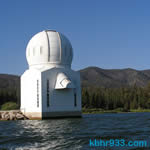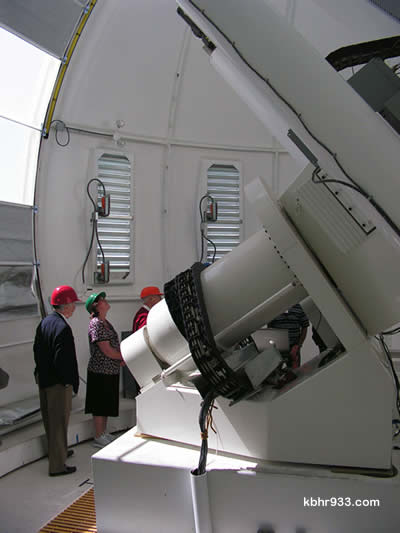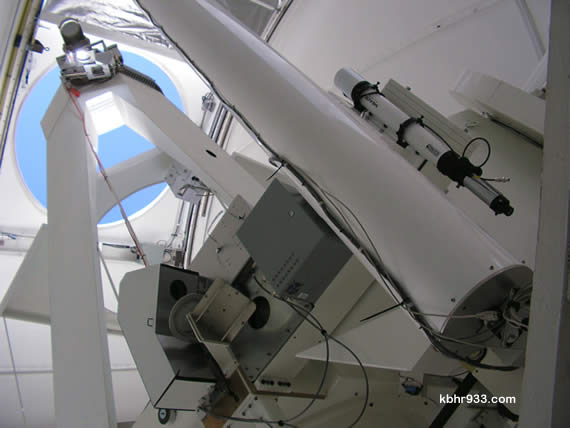

The Big Bear Solar Observatory is an iconic image on Big Bear Lake, yet it is also an internationally recognized facility, boasting the largest solar telescope in the world. Over the last year, an international team of experts has been assembling the solar aperture telescope, which boasts an 1.6 meter mirror, under the direction of astrophysicist Dr. Phil Goode. On October 3, the New Jersey Institute of Technology alumni and staff, including President Dr. Robert Altenkirch, assembled on the North Shore to celebrate the installation of their important new telescope which, per many experts on hand, is a “pathfinder” in the international science community. Seven years in the making, the solar observatory’s NST—or the National Solar Telescope—is one of just a few telescopes in the world that looks at the sun and, says Dr. Goode, “We are now able to see things never seen before.” The observatory’s very international staff of nearly 20 are studying solar magnetic fields and the remarkable resolutions now available will allow an improved understanding of the sun and other stars. The oft-used term “pathfinder” to describe the telescope is due in large part to its specially shaped mirror, formed in a saddle shape like a Pringles potato chip, so as not to absorb too much heat from the sun; the observatory’s location on Big Bear Lake also contributes to a cooler environment, aided by the surrounding water, which is part of the reason that CalTech established the Big Bear Solar Observatory on the lake in 1969. The National Solar Telescope, which was funded in part by NASA and the U.S. Air Force, will continue to provide the data for a “new era” of solar astronomy and is likely to be the largest solar telescope in the world for perhaps another decade. For background on the installation of the telescope, see our story posted August 20.



